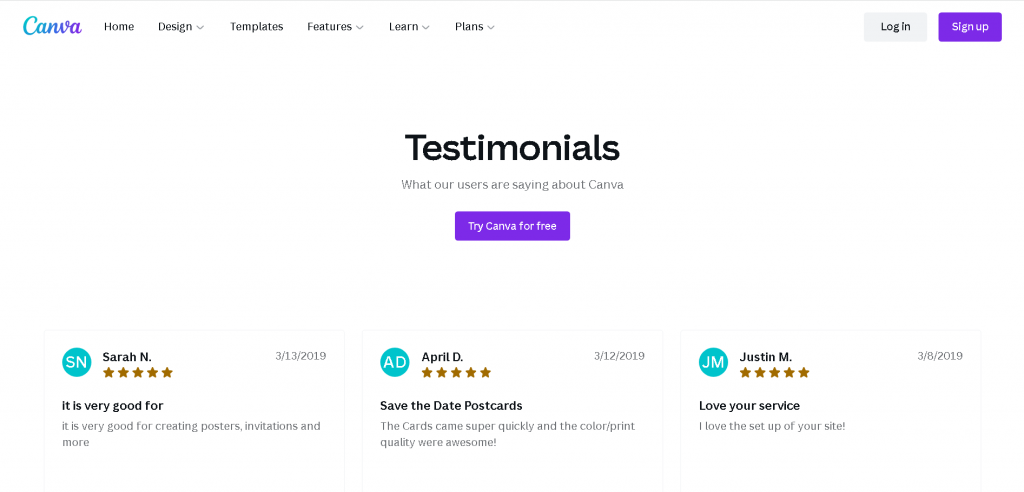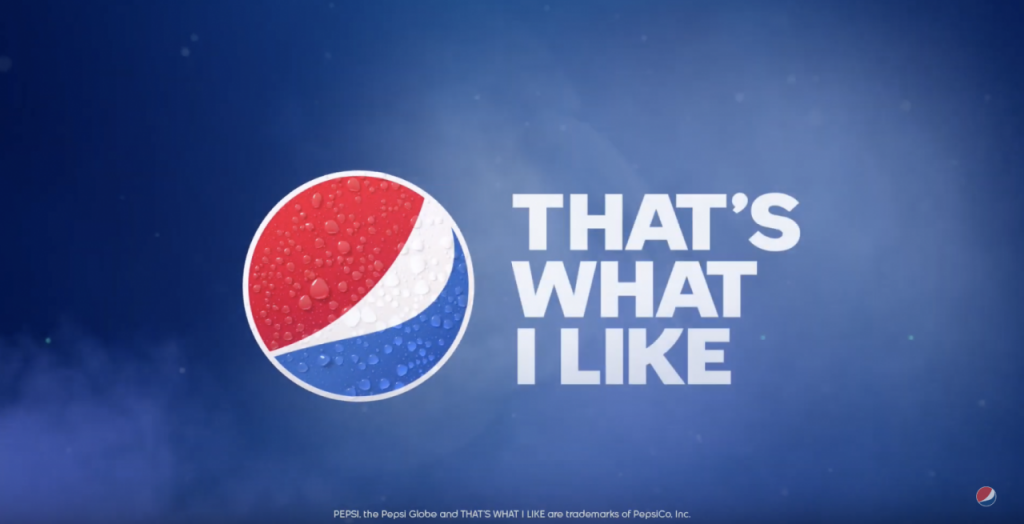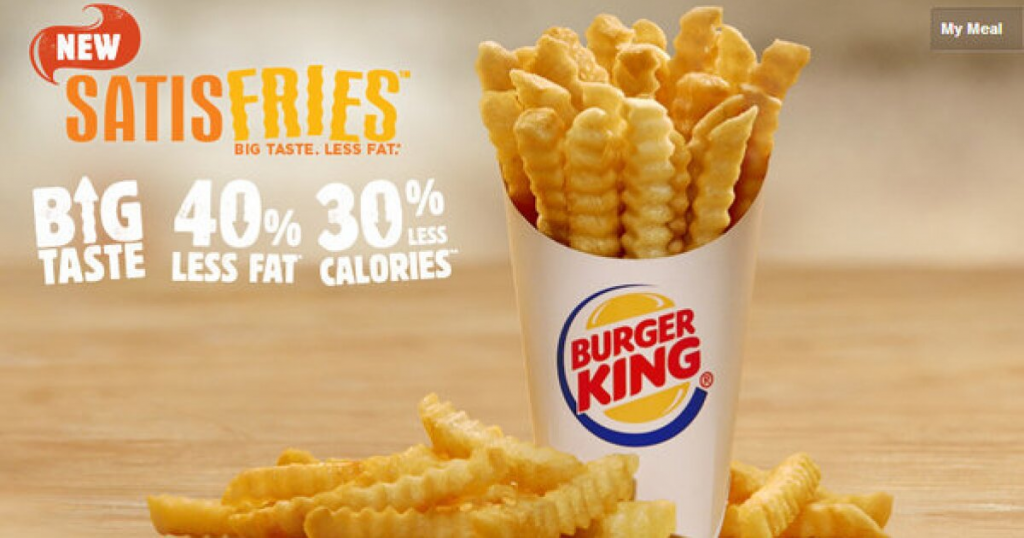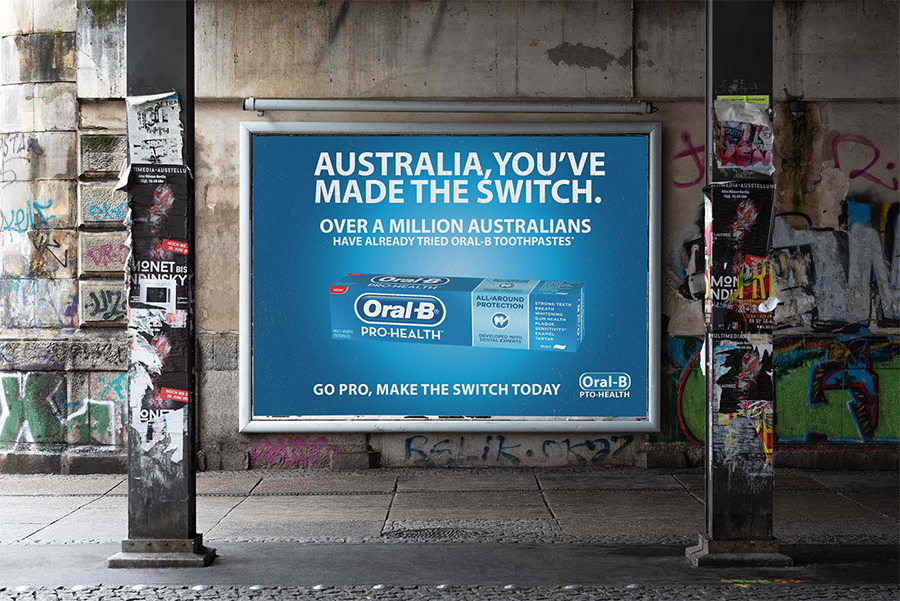Advertising uses suggestive visuals and text to increase your desire for consumer goods, services, and concepts. The belief propagated by propaganda, however, might be the driving force behind people buying what is marketed. Propaganda manipulates your emotions to persuade you to purchase particular goods, services, and viewpoints through advertising. These advertisements could be in the form of the usual billboard ads, newspaper ads, digital ads and more. If your company prefers running digital ads, then consider getting a professional agency for PPC services. It is a great return on investment as you will get expert advice on propaganda used in advertising and what strategies can work for your business.
Advertisers ‘guide’ your shopping behavior by appealing to your repressed impulses to be wealthy, attractive, or popular. Advertisers employ propaganda to persuade consumers to spend money on something they deem ‘attractive.’ These strategies may sound lame but they are very effective when put to use. Several top brands have used them in the past and are also using them currently in their ad campaigns. Some time back you could only see these ads on TV, but now with the rise of digital platforms you can see such adverts on almost all social media platforms. As YouTube ads cost less than TV channel ads, companies prefer them over the latter.
What is Propaganda?
Propaganda and advertising are both potent media tactics that are frequently difficult to distinguish. The enormous amount of consumer data that is currently available forces traditional advertising to evolve its strategies. Because it uses the same multimedia formats as advertising to disseminate its message, propaganda in advertising is similar to advertising. Contrary to advertising, propaganda does not aim to promote the purchase of a good, service, or viewpoint. Propaganda is a visual presentation designed to alter public perceptions of a specific person or subject, much like a sales campaign. The long-lasting impact of propaganda on educational systems and consumer perception is a widely debated topic among the advertising community.
Why is Propaganda used in Advertising?
The purpose of propaganda is to spread a message to a large audience with the intent to influence or change their opinions. Depending on what the propagandist is trying to promote, these influences may be skewed or downright false. Sometimes the concept of propaganda is used to inspire or motivate people, while other times it is used to give the impression that the propagandist intended to make on a certain audience. While some forms of propaganda present versions of the truth that could be compared to actual products, other forms are essentially false and deceptive.
Benefits of propaganda include the ability to shape and mold people’s opinions, which frequently results in the desired response from the target audience. In terms of people’s beliefs regarding what the propaganda is advocating, the effect of this can be quite potent and strongly mesmerizing. Additionally, it could elicit feelings and a particular reaction to or attitude toward the propagandist’s perspective. The victim of propaganda in advertising would then think that the choice they made was autonomous and of their own free will. It conveys a message and powerful themes to an audience that, if it is successful, can overwhelm and profoundly influence that audience.
Propaganda as a term is widely used in political circles rather than advertising. However, when taken into full meaning, it has more relevance with the latter than the former.
Types of Propaganda Used in Advertising
Ads that use propaganda can be quite effective and have a big effect on the viewer. Television firms are now obligated by legislation to control and monitor the use of propaganda influences inside the advertising campaign broadcast. They are also limited in their use of certain advertisements and subject to a number of other restrictions. Here are few types of propaganda that you might encounter in advertising:
- Card Stacking
- Testimonial
- Bandwagon
- Stereotyping
- Transfer Technique
- Glittering Generalities
- Fear Appeals
- Plain Folks
It is important to know about the types of propaganda used in advertising before you start working on building an advertisement campaign for your company. Knowing about these propaganda will allow you to formulate better campaigns that are beneficials for the company as well as the consumers. Let’s read about these different types of propaganda used in advertising in detail:
Card Stacking
Card Stacking advertising intentionally accentuates one point while downplaying the others in order to create a blind spot. It prioritizes the positive over the negative. It is similar to trying to use a finger bandage to hide a large cut on your leg when, frequently, customers are unaware that there is even a cut.
Examples of card stacking in contemporary advertising abound. Due to card stacking’s success in influencing a large number of people, it is frequently employed in communication initiatives. The audience would have to put up a lot of effort to learn about the opponent, which contributes to the strategy’s effectiveness. Card-stacking propaganda is essential in the realm of mass media and rapid media for persuading huge audiences to support a variety of political or business viewpoints.
The majority of food advertising are blatant examples of propaganda for card stacking.
Check out this Burger King advertisement.
Who would not buy a great bag of fries that had 40% less fat? Burger King’s depiction of several facts and data in this image undoubtedly succeeds in capturing the attention of the viewer. However, we all know that fries will never be so healthy. And are these fries really 40% less fat?
Testimonial
Testimonial propaganda is a tactic used to sway people’s ideas without allowing them to properly consider the evidence when a celebrity or another person backs a certain ideology or product. This type of propaganda often attempts to persuade the target audience by using reputable or well-known individuals. It is a sophisticated form of promotion that businesses employ to increase demand for their goods.
The main motivators for potential customers are your already-satisfied clients and their customer testimonials. They work great for internet advertising, social media ads, and just about anywhere else!
When former clients offer online testimonials on how your service or goods have benefited them, it simultaneously:
- Motivates new potential clients
- Enhances brand recognition
- Bring more visitors to your brand website and stores
See how Canva uses testimonials to increase customer trust in the brand and make potential customers confident about its offerings.

Bandwagon
Bandwagon advertising is a form of propaganda advertising tactic that attempts to encourage the target audience to jump on board so that they do not ‘lose out’ on what everyone else is doing. It focuses on the desire of the target audience to be included. They do this on purpose to arouse your interest about what life might be like with the claimed good, service, or idea.
This approach does not only benefit tweens and teens who are eager to fit in with their peers. It appeals to everyone’s desire to feel like they are a part of something wonderful and enjoyable.
Being a part of the crowd implies that the buyer or prospective purchase is smart, cool, and superior to others who choose to go against the crowd. This is the fundamental idea behind bandwagon marketing, which appeals to people’s emotional need to fit in with the cool crowd.
See how Oral-B used this tactics to increase the appeal for their product in Australia:
The toothpaste manufacturer employed the Australian patriotism charm. ‘Australia, you’ve made the switch’, the advertisement read. It shows that savvy Australians abandoned products they had used previously and had intense loyalty to in favor of Oral B toothpaste after realizing its superior advantages.
Stereotyping
Stereotypes are oversimplified assumptions about particular groups that are then applied to specific people. Ads that play on stereotypes do so either to support them or to challenge them. These advertisements appeal to people who want to be linked with them or who feel like they are being targeted. Gender stereotyping in advertising is a known issue that is discouraged in the industry. But sometimes, it can also be done to bring positive change in the society.
A great example could be this campaign by Always:
Always #LikeAGirl campaign achieved more than 85 million global views on YouTube from 150+ countries, which significantly increased global awareness and altered people’s perceptions of the phrase ‘like a girl.’
Only 19% of 16 to 24 year olds had a positive association with the phrase ‘like a girl’ before seeing the movie. But after seeing it, 76% claimed they no longer had a negative opinion of the phrase. In addition, two out of three men who viewed it stated they would now hesitate before using the term “like a girl.”
Transfer Technique
This strategy aims to unjustifiably link the audience’s good associations to a totally unrelated idea. Symbolism is a key component of transfer propaganda, which encourages its intended audience to draw incorrect conclusions.
The advertisement for the Dodge Challenger is a prime example of a commercial that makes use of the transfer technique. In an effort to encourage consumers to purchase the vehicle, this advertisement showcases the new Dodge Challenger with a famous personality. George Washington, the first President of the USA is seen driving about in it while waving a flag in the advertisement. He can be seen driving a Dodge Challenger while wildly careening over the battlefield. The adversary flees from the battlefield out of fear. The transfer procedure is the focus of this advertisement. By displaying George Washington and the American flag alongside the product, a Dodge Challenger, it makes use of it.
The buyer will go out and buy the Dodge Challenger if they see it next to these patriotic icons because they will think it is just as distinguished as George Washington and the American flag. The consumer is unaware of the product’s quality or features just because it is pictured alongside George Washington or the American flag. Transfer is a very effective propaganda tool, which is why it appears in many different advertisements.
Glittering Generalities
Glittering Generalities is a typical propaganda tool. The purpose of adopting a sparkling generality is always to persuade the audience to support a particular notion, idea, person, or product. A dazzling generality is a nebulous, ‘feel good,’ phrase that appeals to people’s desire to identify with what it connects to in terms of beliefs they currently hold or desire to have. They are frequently employed in catchphrases, slogans, and political campaigns. Glittering generalities use powerful language and loaded phrases to make an impression on the audience that will be hearing the message.
This Pepsi campaign is a perfect example of how brands could use powerful lines to divert your attention. The campaign’s tagline ‘That’s What I Like’ is often used as a generally provocative sentence by people who want to show their association with the brand and present a ‘cool’ image.

Fear Appeal
A message that uses a serious threat against the target audience is known as a ‘fear appeal’ in advertising. The purpose of the advertising strategy is to use fear to persuade the target market to engage in or refrain from a particular activity.
The fear-as-acquired drive model, parallel process model, and protective motive theory are just a few of the hypotheses that have been put out in relation to the attraction of the product. The extended parallel process model combines the best aspects of several previous theories, expands the body of research, and contributes to the understanding of why an appeal to fear is effective.
Consider the advertisement for Royal Jordanian to understand the fear appeals model of advertising propaganda.
It is obvious that this is a dread of risk advertisement, and since the man is afraid to fly due to discrimination, it sheds light on the anxiety by providing a friendly and accepting environment in the aircraft of the company(Royal Jordanian).
Even if the goal of each of these advertisements was to get the audience to do something that would help the advertiser, not all fear-based advertisements compel viewers to perform a monetized action.
Plain Folks
There are numerous strategies for persuading someone to take an action. When words appeal to people’s emotions, they can be effective tools for getting them to do things like buy something, vote for someone, or alter their minds about something. The plain folks appeal is a strategy for using regular people to advertise a good or service by demonstrating that regular people use and value the good or service.
Advertisers demonstrate that the product or service has universal appeal by presenting it in this manner. For many years, celebrity endorsements were the main source of product sales in commercials. But due to its success, the appeal to regular people has gained prominence recently.
However, there are also some salty cases of this kind of advertisement where the brand shares the wrong message. A Nutella ad was banned from airing after it was found ‘misleading’ the customers and claiming itself as a breakfast food when it is just desert in a jar. The commercial featured numerous mothers feeding their kids Nutella on toast while a narrator suggested it would be a healthy addition to a balanced breakfast.
Industry watchdog Which? and 52 viewers claimed the advertisement was deceptive in three different ways. Because Nutella contains a lot of sugar and fat, the complainants claimed that claiming it to be a slow-release energy product was inaccurate.
Second, they claimed that the advertisement represented that a jar of Nutella included nothing but hazelnuts, skim milk, and cocoa powder.
Thirdly, they claimed that by failing to make it clear that Nutella was heavy in sugar and fat, the advertisement misled consumers into believing that it was more nutritious than it actually was.

Authorities took action on the company and stopped it from airing the ad until they made few corrections in it.
Also Read
- ASMR Meaning and What All You Need to Know About It
- 7 Father’s Day Marketing Campaign Ideas for Businesses & Marketers
- Facebook Marketing – A Comprehensive Guide!
Negative Effect of Propaganda in Advertising
It is challenging to avoid being impacted by deceptive advertising on the one hand and dishonest public relations on the other. It is tough to watch infomercials that make exaggerated claims about body shape and weight loss or television advertising for makeup that promise to produce a ‘flawless finish’ because, unavoidably, they never work. But the media is flooded with slim, attractive people who have immaculate skin and trim physique. The failure to achieve that aim is detrimental because of the deceptive advertising that gives consumers the idea that perfection was attainable. The media gives the mistaken impression that perfection is the standard and pinnacle of beauty.
This perception could not only have a personal and emotional effect on someone, but it is also an epidemic among young women. Low self-esteem frequently leads to depression. A pervasive mistrust of the media was sparked by the detrimental effects of advertising and the unfavorable reputation of public relations professionals. Public relations should benefit all parties involved, but when businesses are revealed to have manipulated events and information for their own ends solely, it makes it difficult to fully trust them. In order to avoid relying solely on the media for all information, people became more motivated to actively investigate goods and services before making purchases and to educate themselves on current events.
Conclusion
It is a fact that advertising and propaganda have a relation, despite the inconveniences and potential harm they may create. Without propaganda, nobody would feel any need to inform or educate the public about events that concern or have an impact on them and their environment. Without advertising, businesses would not work to outperform their competitors and produce better products. Without these motivating factors in people’s life, there would be a vast information gap and a lack of inventiveness. If you are a consumer, always try to make informed decisions rather than going with baseless claims that a company could make.
Frequently Asked Questions
Is propaganda a type of advertising?
While propaganda involves endorsing, opposing, or condemning a person, idea, trend, or cause to further a specific political or economic goal, advertising is done to promote the sale of a good or service. Advertising and propaganda are related in terms of content creation and bringing sales for a company.
How do advertisements use propaganda?
The use of propaganda in advertising is a strategy to draw people to a product and alter their perceptions of competing goods. To divert their clients’ attention, advertisers deceive and even lie. The interests of their clients do not concern them as much. They employ propaganda in form of modern advertisement strategies where the focus is on bringing as much sales as possible rather than serving the consumer.
What propaganda technique is commonly used in the world of advertising?
Card Stacking is the most widely used propaganda in the world of advertising. Card stacking refers to the practice of amassing or stockpiling enough of a product’s benefits to successfully trick the consumer into disregarding its drawbacks. The phrase “card stacking” refers to skilled card players who are able to shuffle the deck while still managing to stack the cards in their favor.
What are the 5 advertising techniques?
Here are 5 commonly used advertising techniques:
1. Color Psychology
2. Focal Point
3. Visual Path
4. Repetition
5. Body Language
![8 Types of Propaganda Techniques Used in Advertising [With Examples] 1 Types of Propaganda Techniques](https://www.pagetraffic.com/blog/wp-content/uploads/2022/08/types-of-propaganda-techniques.jpg)



























